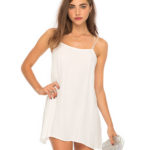Minimalist style, or the minimalist fashion movement, is an emerging trend that emphasizes simplicity, sophistication, and elegance. This article will introduce you to the concept and provide seven essential rules for incorporating minimalist style into your daily wardrobe.
1. Introduction to Minimalist Style
What is Minimalist Style?
Minimalist style, also known as minimalist fashion, is an artistic movement that originated in the West after World War II. Minimalist style has been widely applied in various aspects of life, including interior design, fashion, cuisine, and more. To this day, minimalist fashion remains timeless, predominantly featuring the colors black and white.
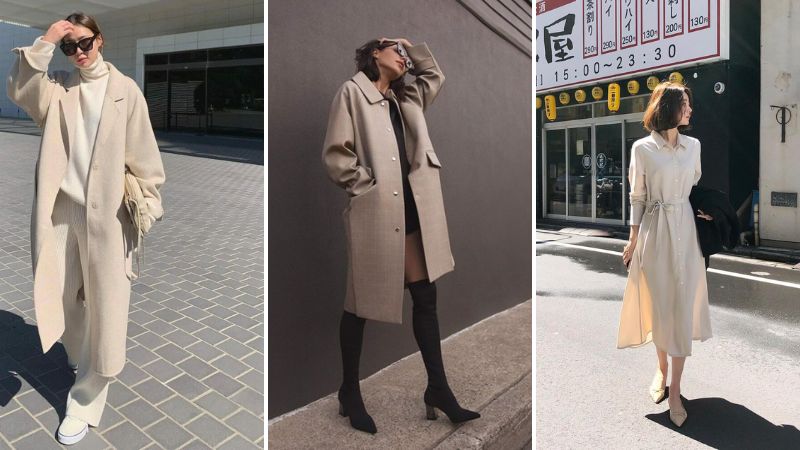 What is Minimalist Style?
What is Minimalist Style?
Development Stages of Minimalist Style
From its Birth to the 1990s
Minimalist style has evolved since its inception up until the 1990s. Although it emerged during World War II, it wasn’t until the 1920s that minimalist fashion began to capture attention and become a popular choice. This style embodies the concept of elegance, manifested through sophistication, fluidity, and grace in its lines, rather than relying on decorative patterns or intricate details.
In the 1960s, minimalist style experienced significant growth with contributions from designers Pierre Cardin and André Courrèges, who created garments that exuded sophistication and lightness. By the 1970s, monochromatic dress designs became prevalent and highly sought-after. Since then, minimalist fashion has retained its popularity without showing any signs of waning.
Present Stage
Nowadays, minimalist style is typically recognized through two main aspects: the use of monochromatic color schemes (usually white or black) and simplicity and sophistication in the cut and construction of garments.
While modern designs retain the fundamental characteristics of minimalist style, they have been refreshed with elements such as broad-shouldered dresses or new color-blocking techniques. These designs introduce a sense of dynamism and break free from the repetitiveness of the past.
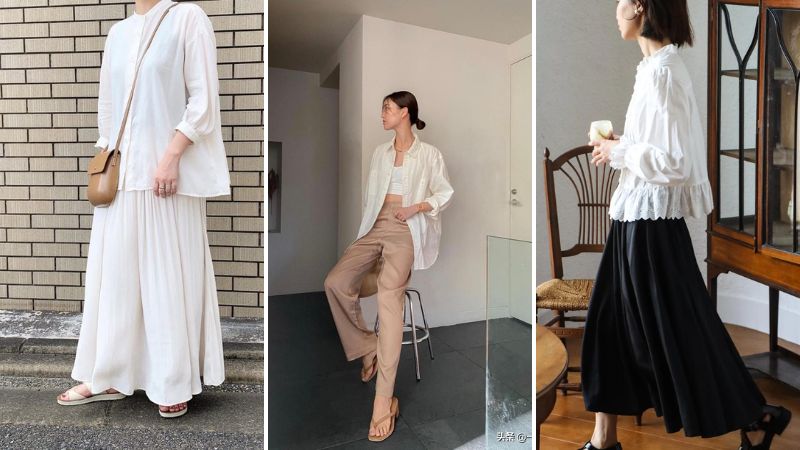 Development Stages of Minimalist Style
Development Stages of Minimalist Style
2. Why is Minimalist Style Gaining Popularity?
Minimalist style, or minimalism, is gaining traction for several reasons. Much like the desire to savor fresh, crisp vegetables after indulging in rich, spicy foods, people are drawn to the simplicity and sophistication that minimalist fashion offers.
Minimalist fashion is favored by many style enthusiasts due to its contemporary appeal, standout qualities, and versatility. With minimalist garments, you can confidently go anywhere, as minimalism caters to a range of needs: simplicity, comfort, elegance, and fashion.
Minimalist style is characterized by the use of monochromatic color palettes and designs that focus on fundamental lines without complexity or frills. In other words, minimalism strives to keep things as simple as possible, aiming for elegance and sophistication.
This style creates contrast and balances the human body’s silhouette through meticulous tailoring, ensuring that the wearer stands out while remaining comfortable.
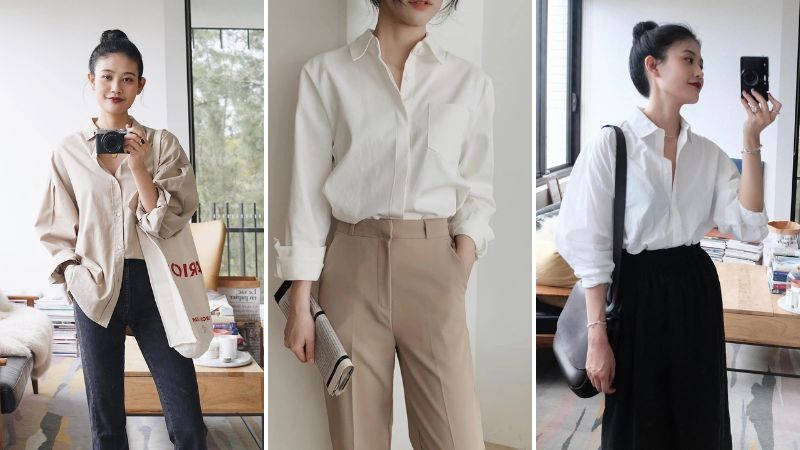 Why is Minimalist Style Gaining Popularity?
Why is Minimalist Style Gaining Popularity?
3. 7 Rules of Minimalist Style to Remember
Always Opt for Simple Designs
If you’re embracing minimalist style, choose simple designs and basic color palettes like white, black, beige, and pastel hues. Set aside flashy patterns and intricate accessories if you want to follow the minimalism trend. The simpler the garment, the more elegant it appears, and the easier it is to mix and match with other pieces.
 Opt for Simple Designs
Opt for Simple Designs
Create a Versatile Minimalist Wardrobe
To create a versatile minimalist wardrobe, invest in essential, timeless, and easily combinable pieces such as white and black shirts, neutral-colored items, and little black dresses. With just a few of these basics, you can craft numerous refined and fashionable outfits that truly embody minimalist style.
 Create a Versatile Minimalist Wardrobe
Create a Versatile Minimalist Wardrobe
Build a Suitable Color Palette
Minimalist style isn’t limited to black and white, so create a harmonious color palette. You can incorporate solid-colored garments like red, cobalt blue, and purple. However, refrain from using too many colors in one outfit, and stick to a maximum of 2-3 colors at a time. Additionally, choose a neutral tone to act as a “base” and soften the other colors.
 Build a Suitable Color Palette
Build a Suitable Color Palette
Select Flattering Silhouettes
Once you’ve restricted yourself to a minimalist color scheme and accessories, the choice of silhouette becomes the most crucial factor. The silhouette should complement your body shape and stay on-trend to prevent your minimalist outfits from becoming boring. Currently, sharp, angular cuts and lines are in vogue.
 Select Flattering Silhouettes
Select Flattering Silhouettes
Limit Layering
An essential aspect of minimalist style is limiting the number of layers in your outfits. To convey lightness, neatness, and simplicity, avoid excessive layering. If you do layer, restrict it to a maximum of two layers. This style is easiest to achieve with one-piece outfits like dresses or jumpsuits. Alternatively, a lightweight jacket or blazer can provide a stylish accent.
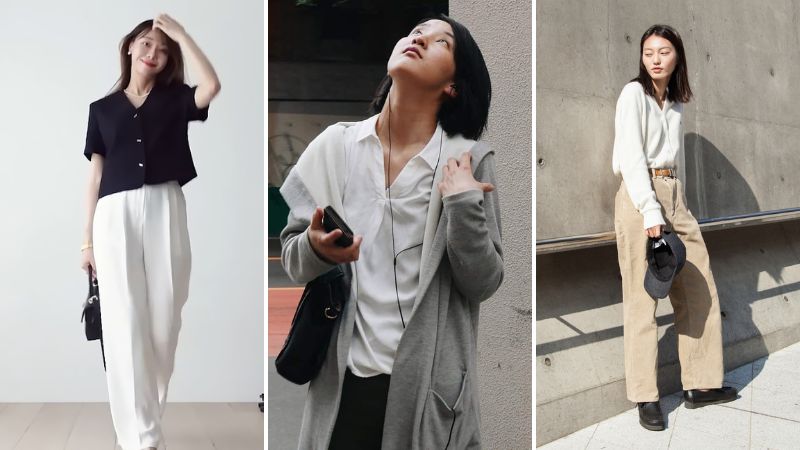 Limit Layering
Limit Layering
Avoid Over-accessorizing
Refrain from wearing too many accessories, as this can make your ensemble appear cluttered and detract from the desired elegant aesthetic. To embody minimalist style, minimize accessories and focus on simplicity and sophistication. A simple handbag or pair of heels can perfectly complete your look.
 Avoid Over-accessorizing
Avoid Over-accessorizing
Create Contrast in Your Minimalist Looks
An easy way to create contrast in minimalist style is to use opposing colors, such as black and white or navy and white. The color contrast between these pairs will add appeal to your minimalist outfits. However, contrast doesn’t only come from colors but also from fabrics and silhouettes. Feel free to experiment with these elements to create unique and intriguing ensembles.
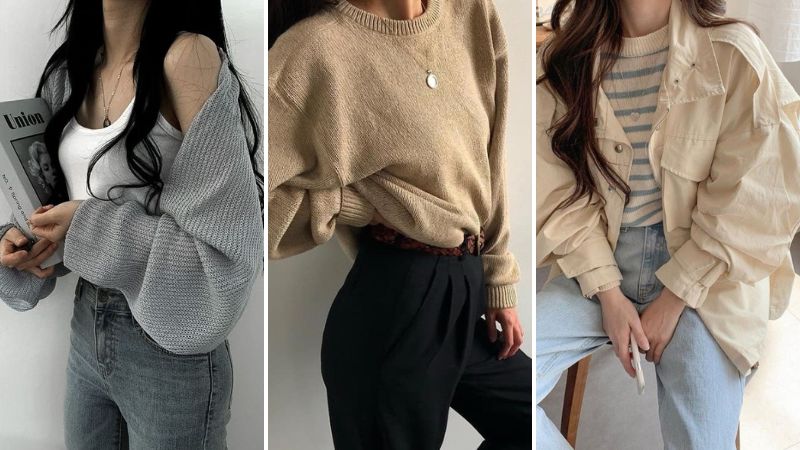 Create Contrast in Your Minimalist Looks
Create Contrast in Your Minimalist Looks
By applying these seven rules, you can craft eye-catching minimalist outfits that reflect your personal style. Embrace minimalist fashion with confidence and enjoy the comfort it brings.




























